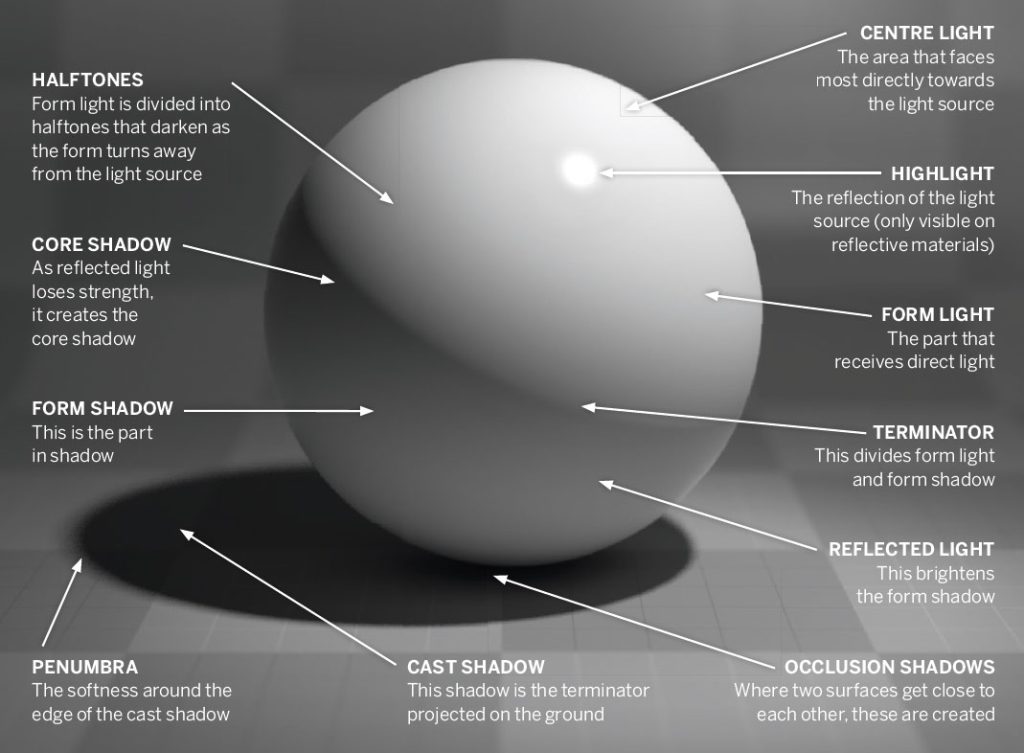
Easy Steps on How to Draw: No Experience Needed
Easy Steps On How To Draw: An Introduction
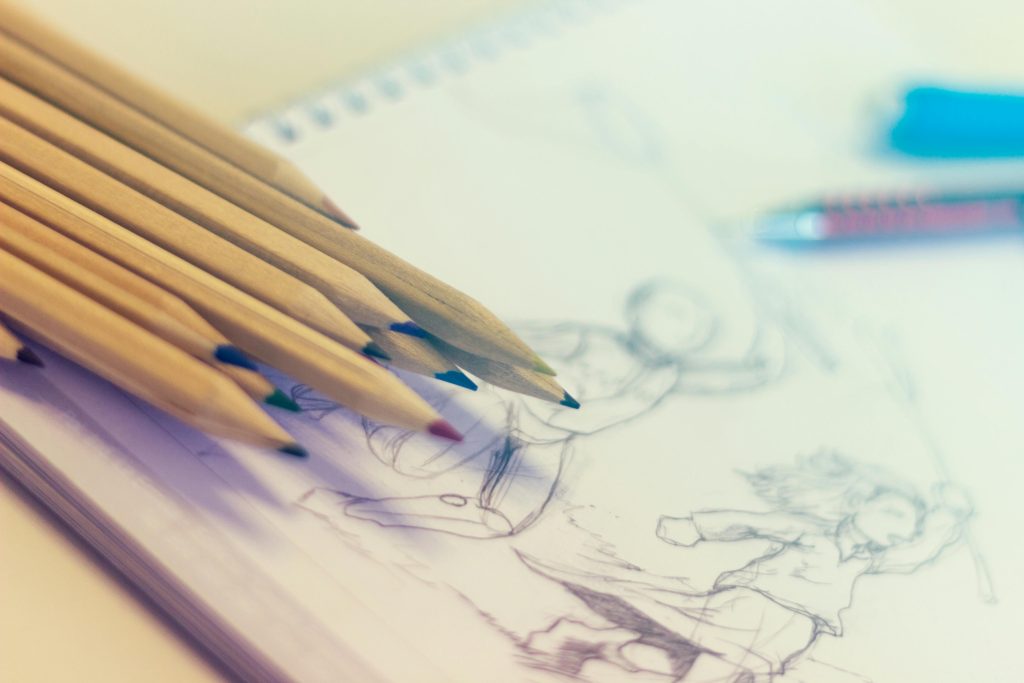
Welcome to the World of Drawing
Welcome to the captivating world of drawing! Imagine transforming a blank page into a vivid scene, a mesmerizing character, or a stunning landscape. It’s not magic; it’s a skill you can master. Drawing is an enchanting blend of creativity and technique, accessible to everyone. Whether you’ve never picked up a pencil or dabbled a bit in the past, you’re in the right place to learn easy steps on how to draw.
Why Everyone Can Learn to Draw
Anyone can learn to draw. Yes, anyone. With the right guidance, patience, and practice, you’ll unlock your inner artist. The beauty of drawing lies in its simplicity and accessibility. No need for expensive equipment or prior knowledge. All you need is a pencil, some paper, and a willingness to explore your creative potential. Many people wonder, “How long does it take to get good at drawing?” The answer varies, but with consistent practice, you’ll see improvement in no time. Furthermore, by following easy steps on how to draw, you can make your learning journey smoother and more enjoyable.
What You’ll Need to Get Started
In this guide, we’ll cover everything you need to get started. From the essential tools to understanding basic shapes and mastering shading techniques, we’ve got you covered. We’ll explore drawing tutorials, step-by-step easy drawing techniques, and even touch on sketching. So, are you ready to embark on this artistic journey? Let’s dive in and discover the joy of drawing together. With these easy steps on how to draw, you’ll find yourself creating wonderful artwork before you know it.

Step 1: Gather Your Drawing Supplies
Essential Tools for Beginners
- Before you embark on your artistic journey it’s crucial to equip yourself with the right tools. In addition, you don’t need a vast array of supplies in the beginning. Start with the basics and gradually expand your collection. Here are the essential tools every beginner should have:
- Pencils: A range of graphite pencils, from hard (H) to soft (B), will help you create various lines and shading effects. A good starter set includes 2H, HB, 2B, and 4B pencils.
- Erasers: Invest in a kneaded eraser for subtle corrections and a white vinyl eraser for clean, precise erasing.
- Sharpener: A good quality pencil sharpener, preferably with a container to catch shavings, is a must-have.
- Paper: Begin with a sketchpad of medium weight paper. Look for paper labeled as “drawing” or “sketching” paper to ensure it can handle erasing and shading without tearing.
- Blending Tools: Tortillons or blending stumps are fantastic for smoothing out your shading and creating gradients.
For those wondering easy steps on how to draw effectively, having the right tools is crucial. You might also consider exploring draw apps for Chromebook or other digital platforms to supplement your traditional drawing practice.
My Recommended Brands and Where to Buy
Choosing the right brand can make a significant difference in your drawing experience. It sure has for me since I began drawing at age 5! Here are some of my most trusted brands and where you can purchase them:
- Pencils: Faber-Castell and Staedtler are renowned for their high-quality pencils. You can find these at most local art supply stores or online retailers like Amazon.
- Erasers: Prismacolor kneaded erasers and Staedtler Mars plastic erasers are highly recommended. They are available at arts and crafts stores like Michaels or Joann Fabrics, as well as online.
- Sharpener: The KUM Automatic Long Point sharpener is a favorite among artists for its precision. Check out specialty art stores or websites like Blick Art Materials for this gem.
- Paper: Strathmore and Canson offer excellent sketchpads that are both durable and affordable. These can be found at most major retailers, including Walmart and Target, in addition to dedicated art supply stores.
- Blending Tools: Derwent and Pro Art produce quality blending stumps and tortillons. These are available at local art stores or online marketplaces such as Amazon and Blick.
Gathering your supplies is the first step towards unleashing your creativity. With these tools at your disposal, you’re ready to dive into the wonderful world of drawing. Up next, we’ll delve into understanding basic shapes, the fundamental building blocks of all your artistic endeavors. Stay tuned and get ready to sketch your heart out! By following these easy steps on how to draw, you’ll be well on your way to creating beautiful art.
Step 2: Understanding Basic Shapes
The Building Blocks of All Drawings
Now that you’ve gathered your supplies, it’s time to lay the foundation of your drawing skills. Understanding basic shapes is crucial, as these shapes are the building blocks of all drawings. From the simplest doodles to the most intricate masterpieces, every piece of art begins with basic geometric forms. Circles, squares, triangles, and ovals might seem rudimentary, but they form the skeleton of complex images. By mastering these simple shapes, you’ll be able to deconstruct and recreate any object you wish to draw.
Think of basic shapes as the alphabet of drawing. Just as letters combine to form words and sentences, shapes combine to create images. For instance, a face can be broken down into a series of ovals and circles, while a house starts as a collection of rectangles and triangles. By recognizing and practicing these shapes, you’ll develop a keen eye for structure and proportion. This is especially helpful when learning how to draw for boys or anyone looking for easy things to draw for beginners.
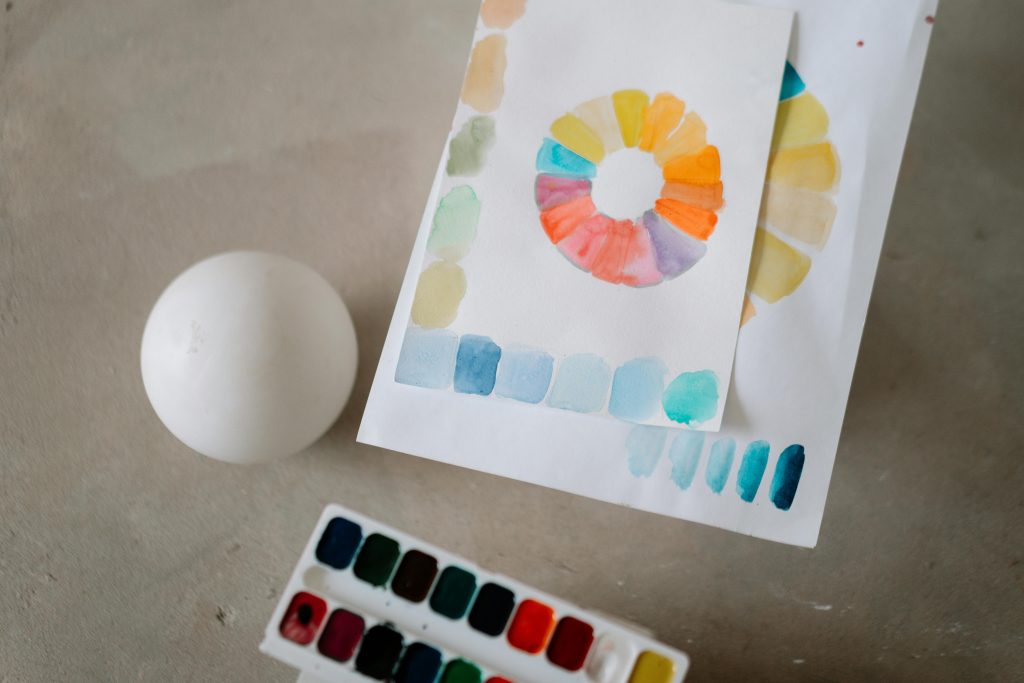
Practicing Simple Shapes Daily
Practice makes perfect, and this adage holds true in the world of drawing. Dedicate time each day to practice drawing simple shapes. This daily exercise will not only improve your hand-eye coordination but also build muscle memory.
- Start by drawing circles. Make them large, small, and everything in between. Focus on keeping your lines smooth and consistent. Learning how to draw a perfect circle is a valuable skill that will improve your overall drawing abilities.
2. Next, move on to squares and rectangles. Practice drawing them from different angles and perspectives. This will help you understand how shapes can change in appearance based on their orientation. Don’t worry about perfection; the goal is to become comfortable and confident with your lines.
3. Triangles and ovals come next. Triangles are particularly useful for drawing dynamic shapes and forms, while ovals help in capturing the essence of organic shapes. Experiment with different sizes and angles and see how they fit together.
Here’s a fun tip: combine these shapes to create simple objects. For instance, draw a snowman using circles or a house with rectangles and triangles. The more you practice, the more intuitive these shapes will become. This approach is great for those looking for really easy stuff to draw or simple easy things to draw.
By dedicating just a few minutes each day to practicing basic shapes, you’ll lay a solid foundation for your drawing skills. In the next step, we’ll explore line techniques and how they can bring your drawings to life. Ready to add some flair to your sketches? Let’s dive into the world of lines and curves! Following these easy steps on how to draw will ensure your progression into more complex illustrations.

Step 3: Mastering Line Techniques
Different Types of Lines: Straight, Curved, and Zigzag
Lines are the essence of drawing, the threads that weave together to create forms and textures. Mastering different types of lines is essential for adding variety and life to your sketches. Let’s start with the basics: straight lines. They might seem straightforward, but straight lines are foundational for creating structure and balance in your drawings. Whether you’re sketching the horizon or the edge of a building, straight lines provide clarity and precision.
Curved lines, on the other hand, bring fluidity and grace to your artwork. Think of the gentle arc of a leaf, the curve of a cheek, or the flowing lines of a river. These lines are versatile and can convey movement and softness. Practicing curved lines will help you capture the natural, organic forms found in everyday life.
Then there are zigzag lines, the epitome of dynamism and energy. These lines can depict jagged mountains, the texture of hair, or even the crackle of lightning. Zigzag lines add excitement and contrast, making your drawings more engaging and dynamic. Understanding these line types is crucial when exploring easy steps on how to draw beautiful drawings or creating sketch technique variations.
Line Exercises to Build Confidence
Building confidence with lines starts with consistent practice. Here are some exercises to help you master the art of line work:
Straight Line Drills: Fill a page with straight lines. Start from the top and work your way down, varying the length and direction of each line. Focus on maintaining consistent pressure and smoothness.
Curved Line Practice: Draw a series of S-shapes and C-shapes, both large and small. Experiment with the tightness of the curves and try to keep the lines fluid and continuous.
Zigzag Patterns: Create zigzag patterns across your page. Vary the angles and lengths of each segment. This exercise will help you gain control over sharp changes in direction.
Line Variation: Combine straight, curved, and zigzag lines to create intricate patterns. This exercise will improve your ability to transition smoothly between different types of lines.
Contour Drawing: Choose a simple object and draw its outline using continuous lines. This technique, known as contour drawing, helps you observe details and improve line accuracy.
By regularly practicing these exercises, you’ll develop a steady hand and a keen eye for detail. Your lines will become more deliberate and expressive, enhancing the overall quality of your drawings. These exercises are particularly helpful for those wondering how to draw so cute or create natural-looking sketches. Next, we’ll delve into the fascinating world of light and shadow, exploring how to add depth and dimension to your artwork. Ready to transform your flat sketches into dynamic scenes? Let’s illuminate the next step!
Step 4: Exploring Light and Shadow
Introduction to Shading
Welcome to the mesmerizing world of light and shadow! Shading is the secret ingredient that transforms flat, two-dimensional drawings into lifelike, three-dimensional masterpieces. By mastering shading, you can create depth, texture, and realism in your artwork. It all begins with understanding how light interacts with objects. Imagine a bright light shining on a sphere. The part directly facing the light source will be the brightest, while the opposite side will be shrouded in shadow. This gradient from light to dark is what gives your drawings volume and form.
Creating Depth with Light and Shadow
Creating depth involves more than just placing dark and light areas randomly. It’s about observing and replicating the way light behaves in real life. Start with a simple object, like a ball or a cube. Position a light source, such as a desk lamp, and study how it casts shadows and highlights on the object. This practice is essential for learning how to draw with shadow and create realistic, three-dimensional effects.
Highlighting: The area where the light hits directly is the highlight. This should be the lightest part of your drawing. Use minimal pressure on your pencil to achieve a soft, bright effect.
Midtones: These are the areas that receive indirect light. They bridge the gap between the highlights and the shadows. Use medium pressure to create these gradients, blending smoothly from light to dark.
Core Shadow: The darkest part of the shadow, located on the object itself, is known as the core shadow. Apply more pressure with your pencil to achieve a rich, dark tone.
Cast Shadow: This is the shadow that the object casts onto the surface it’s sitting on. It’s usually darkest near the object and fades as it moves away. Keep this shadow consistent with the direction of your light source.
Reflected Light: Sometimes, light bounces off nearby surfaces and illuminates the shadowed part of the object. As a result, this reflected light adds another layer of realism to your drawing. Use a lighter touch to indicate this subtle illumination.
In the next step, we’ll take your skills further by exploring the art of drawing from real life. Observing and sketching everyday objects will sharpen your eye for detail and proportion. Ready to bring real-world accuracy to your art? Let’s step into the realm of life drawing!

Step 5: Drawing from Real Life
Observing and Sketching Everyday Objects
Drawing from real life is an invaluable skill that hones your observation and precision. By sketching everyday objects, you learn to see the world through an artist’s eyes. Begin with simple items: a cup, a plant, or a shoe. Place your chosen object in a well-lit area then take a moment to study it. Notice its shape, texture, and the way light interacts with its surfaces. This practice is excellent for those looking for drawing sketchbook ideas or seeking inspiration to draw from their surroundings.
Start with a light outline, focusing on the overall form rather than details. This initial sketch is your blueprint. Next, refine your drawing by adding more defined lines and incorporating shading techniques you’ve practiced. Pay close attention to shadows and highlights, as they bring your drawing to life. This approach is particularly useful when learning Easy Steps on How to Draw sketches of everyday objects or practicing perspective for drawing.

Tips for Capturing Proportions Accurately
Capturing proportions accurately can be challenging but immensely rewarding. Here are some tips to help you master this crucial aspect of drawing:
Use Reference Points: Identify key points on your object and use them as reference points. For example, if you’re drawing a bottle, note the distance from the top to the bottom and the width at different sections.
Grid Method: Create a grid on your paper and on a reference photo (if you’re using one). This helps break down the object into manageable sections, making it easier to capture proportions accurately. This method is particularly helpful when learning Easy Steps on How to Draw pictures for beginners.
Compare Sizes: Constantly compare the sizes of different parts of your object. For instance, how many times does the width of the base fit into the height? These comparisons help maintain correct proportions.
Use a Pencil for Measurement: Hold a pencil at arm’s length and use your thumb to measure parts of your object. Transfer these measurements to your drawing to ensure accuracy.
Check Angles: Observe the angles formed by lines and edges of your object. Use your pencil as a guide by holding it up and comparing the angles in your drawing to the real object.
Take Breaks: Step away from your drawing periodically. Returning with fresh eyes helps you spot proportional errors you might have missed.
Practicing these techniques will improve your ability to draw accurately from life, enhancing both your skill and confidence. This approach is particularly useful for those wondering how to draw natural objects or create realistic sketches. Next, we’ll explore how adding details to your drawings can elevate them from simple sketches to intricate artworks. Ready to delve into the finer aspects of drawing? Let’s dive in and bring your art to the next level!

Step 6: Adding Details to Your Drawings
The Importance of Fine Details
Adding fine details to your drawings is where the magic truly happens. It’s in the minutiae that your artwork transforms from good to extraordinary. Details bring depth, texture, and realism, allowing your drawings to resonate with life. Think about the delicate veins in a leaf, the subtle wrinkles in fabric, or the intricate pattern within a butterfly’s wings. These elements captivate viewers and draw them into your art. With a consistent approach using Easy Steps on How to Draw, you will gradually discover the finer details in drawing.
Fine details are not just about aesthetics; they convey a story. They reflect the artist’s dedication and keen observation, showcasing a level of skill and effort that sets your work apart. When you focus on details, you demonstrate your understanding of the subject, revealing nuances that might otherwise go unnoticed. This attention to detail is particularly important when learning how to draw for YouTube or creating content for drawing YouTube videos.
Techniques for Detailed Work
To master the art of detailing, you need patience, precision, and the right techniques. Here are some methods to help you enhance the fine details in your drawings:
Layering: Build up details gradually by layering. Start with light lines and add layers of shading and texture. This technique allows you to create depth and complexity without overwhelming your drawing.
Hatching and Cross-Hatching: Use hatching (parallel lines) and cross-hatching (overlapping lines) to add texture and value. Vary the spacing and direction of the lines to achieve different effects and create intricate patterns.
Stippling: Create texture and shading with dots. Stippling involves placing small dots closely together for darker areas and spacing them out for lighter areas. This technique requires patience but produces stunningly detailed results.
Highlighting: Reserve your highlights for the final stages. Use a kneaded eraser to lift graphite from areas you want to highlight or add white pencil or ink for bright highlights. This contrast makes details pop.
Microscopic Focus: Zoom in on small sections of your drawing to work on intricate details. Use a magnifying glass or take close-up reference photos to ensure accuracy.
Incorporating these techniques will elevate your drawings, adding layers of complexity and realism. As you refine your skills, you’ll find joy in the process of detailing, discovering new ways to bring your art to life. These techniques are particularly useful for those interested in fashion design sketching or creating intricate illustrations. Next, we’ll explore the exciting world of different styles, helping you discover and define your unique style.

Step 7: Experimenting with Different Styles
Discovering Your Unique Artistic Style
Your artistic style is your creative fingerprint, the distinctive mark that sets your artwork apart from others. It’s a reflection of your personality, preferences, and experiences as an artist. Discovering your unique style involves exploring different techniques, subjects, and mediums until you find what resonates most with you. Embrace experimentation and allow yourself the freedom to play and evolve. Whether you’re interested in learning Easy Steps on How to Draw YouTuber characters or creating cool, fun things to draw, your style will emerge as you practice.
Your style might lean towards realism, capturing intricate details with precision and accuracy. Or perhaps you’re drawn to the simplicity and humor of cartooning, where exaggerated features convey emotions and stories. Maybe abstraction speaks to your desire to interpret the world through colors, shapes, and textures. The key is to explore and find what feels natural to you.
Trying Out Cartoon, Realistic, and Abstract Styles
Diving into different artistic styles not only expands your skills but also enriches your artistic journey. Here’s a glimpse into each style:
Cartoon Style: Cartooning simplifies and exaggerates features to create playful and expressive characters. Focus on bold lines, exaggerated proportions, and vibrant colors to convey emotions and narratives. This style is perfect for those looking for cute, easy drawing ideas or learning Easy Steps on How to Draw characters that stand out.
Realistic Style: Realism aims to replicate the subject as accurately as possible, often focusing on intricate details and subtle variations in light and shadow. Use shading techniques and fine details to create lifelike portraits, landscapes, or still lifes. This style is ideal for those interested in how to draw beautiful, detailed drawings or create natural-looking sketches.
Abstract Style: Abstract art moves away from literal representation, focusing on shapes, colors, and textures to evoke emotions and ideas. Experiment with unconventional compositions, bold brushstrokes, and unexpected color combinations to create visual poetry. This style allows for great freedom in expression and is perfect for those seeking to draw for fun and explore new creative horizons.
Each style offers its own challenges and rewards. Explore them with curiosity and openness. You may find that your style evolves over time or that you develop a hybrid approach that blends different elements. The key is to enjoy the process of discovery and allow your creativity to flourish.
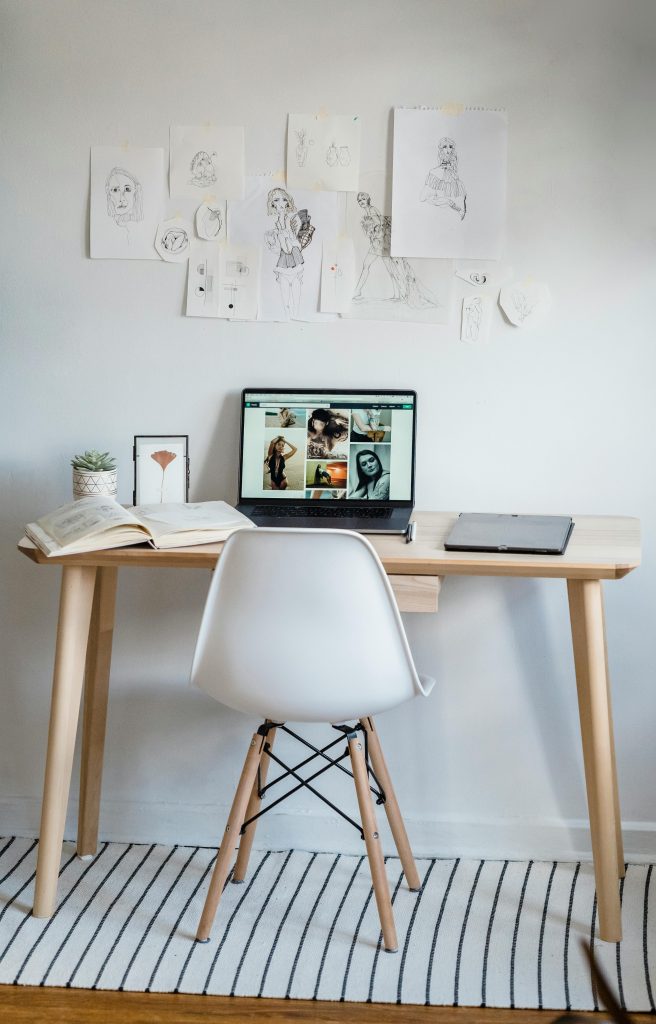
Step 8: Using Reference Images
Finding and Using Reference Photos Effectively
Reference images are invaluable tools that can enhance the accuracy and creativity of your drawings. Whether you’re drawing from life or exploring imaginative realms, reference photos provide a solid foundation. Here’s how to find and use them effectively:
Begin by choosing high-quality reference photos that align with your artistic vision. Look for images that offer clear details and interesting compositions. Online platforms like Unsplash, Pixabay, and Flickr offer a wealth of free, high-resolution photos across various subjects. For specific themes or projects, consider purchasing stock photos or using specialized websites like Shutterstock or Adobe Stock.
Once you have your reference photos, study them closely. Observe the lighting, perspective, and details of your subject. Pay attention to how light interacts with surfaces, the textures of different materials, and the subtle nuances that make your subject unique. Use this visual information to inform your drawing, ensuring accuracy and realism. This approach is particularly useful when learning Easy Steps on How to Draw or creating more complex compositions.
Avoiding Common Pitfalls with References
While reference images are valuable, it’s essential to use them judiciously and avoid common pitfalls:
Over-reliance: While references provide guidance, avoid copying them verbatim. Use them as a foundation to build upon, adding your interpretation and artistic flair.
Lack of Creativity: Don’t let references stifle your creativity. Experiment with different angles, compositions, and interpretations to make the artwork your own.
Poor Quality Photos: Choose reference photos with clarity and detail. Blurry or low-resolution images can lead to inaccuracies and frustration.
Copyright Infringement: Respect copyright laws when using reference photos. Ensure you have the right permissions or use photos with appropriate licenses for your artwork.
Dependency: While references are helpful, aim to develop your visual memory and observational skills. Practice drawing from life to strengthen your abilities beyond reliance on photos.
By mastering the art of using reference images effectively and creatively, you’ll expand your artistic repertoire and enhance the quality of your drawings.

Step 9: Practicing with Simple Subjects
Easy Steps On How To Draw a Flower
Drawing flowers can be a delightful way to hone your skills and capture nature’s beauty on paper. Follow this step-by-step guide to create your own floral masterpiece:
- Choose Your Flower: Select a flower that inspires you. It could be a rose, a sunflower, or any bloom that catches your eye.
- Outline the Basic Shape: Start with a light outline of the flower’s basic shape. Pay attention to the petals’ size and arrangement.
- Add Details: Begin detailing the petals. Notice their curves, folds, and edges. Use gentle strokes to capture the delicate texture.
- Focus on the Center: Draw the center of the flower, whether it’s stamens, pistils, or a seed pod. This adds depth and realism to your drawing.
- Shading and Highlights: Shade areas where shadows fall and add highlights to petals catching light. This contrast brings your flower to life.
- Background: Consider adding a simple background to enhance your flower’s visual impact. A subtle wash or textured backdrop can complement your subject.
This guide is perfect for those looking for drawing ideas simple enough for beginners but still engaging for more experienced artists. Plus, it’s one of the Easy Steps on How to Draw beautiful flowers.
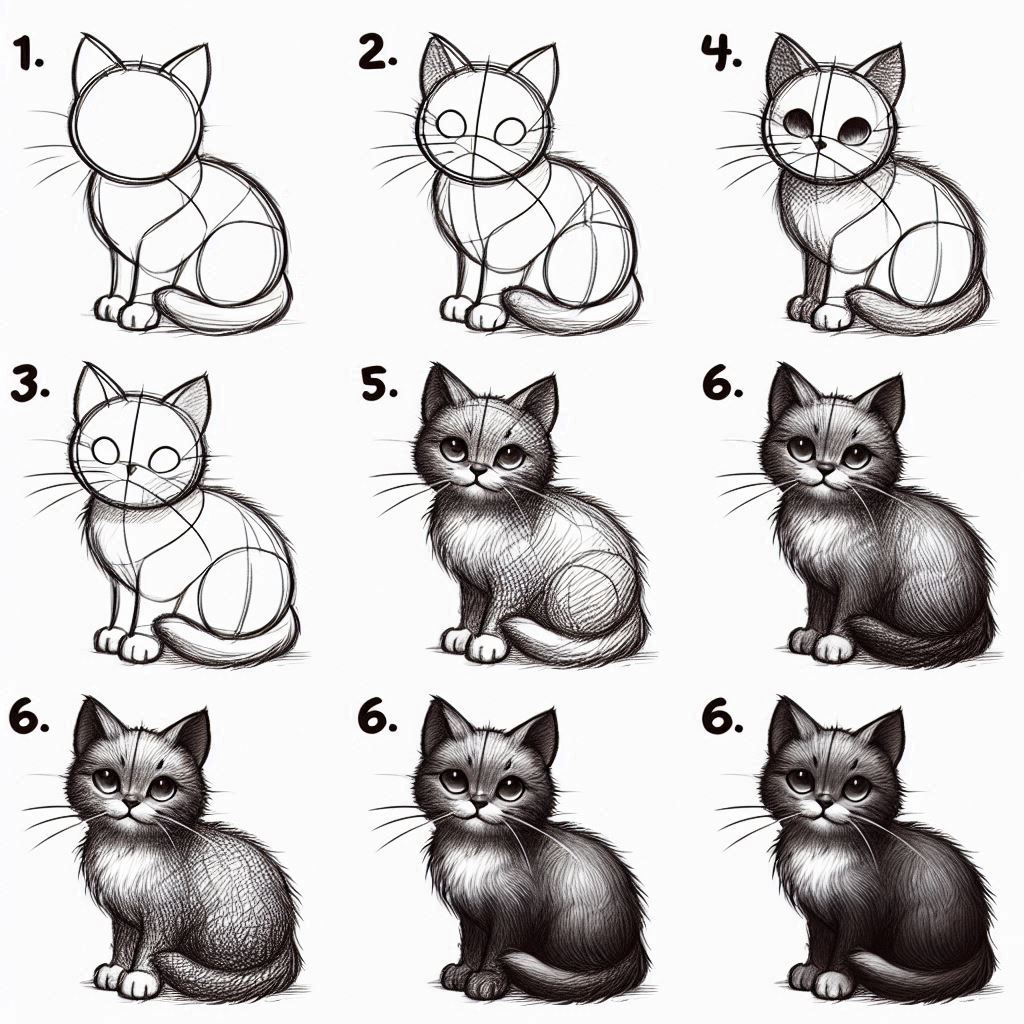
Easy Steps On How To Draw a Cat
Drawing animals, like cats, allows you to explore different textures and personalities. Here’s a straightforward tutorial to guide you through drawing a charming feline:
- Start with Basic Shapes: Begin by sketching simple shapes to outline the cat’s body and head. Use circles for the head and body, and triangles for ears.
- Define Features: Add details like the eyes, nose, and whiskers. Cats’ eyes are expressive, so focus on capturing their shape and gaze.
- Fur Texture: Use short, quick strokes to suggest fur texture. Pay attention to the direction of fur growth, especially around the face and body.
- Tail and Paws: Draw the tail and paws, paying attention to their proportions and position relative to the body.
- Shading and Depth: Shade areas to create depth. Focus on shadows under the chin, around the eyes, and where the body casts shadows.
- Final Touches: Add any final details, such as whiskers or a collar, to personalize your cat drawing.
This tutorial is ideal for those seeking easy things to draw for beginners or looking for simple drawing ideas to practice. Moreover, it fits perfectly into the Easy Steps on How to Draw series, helping you build confidence in your drawing skills.
Practicing with simple subjects like flowers and cats not only refines your drawing techniques but also allows you to explore different aspects of artistry. Whether you’re drawn to the elegance of petals or the playful nature of animals, these exercises enhance your observational skills and artistic expression.

Step 10: Building Your Confidence
Overcoming the Fear of Mistakes
Fear of making mistakes is a common hurdle for artists at any skill level. However, embracing mistakes as part of the learning process can fuel your artistic growth. Here’s how to overcome this fear and unleash your creativity:
Embrace Imperfection: Understand that mistakes are natural and essential for improvement. They offer opportunities to learn and refine your skills.
Learn from Errors: Analyze mistakes instead of dwelling on them. Identify what went wrong and how you can correct it in future drawings.
Experiment Freely: Give yourself permission to experiment and try new techniques without fear of judgment. Art is about exploration and self-expression.
Positive Mindset: Cultivate a positive mindset towards your artistic journey. Focus on progress rather than perfection, celebrating each step forward.
Seek Feedback: Share your work with trusted friends or online communities for constructive feedback. Others’ perspectives can provide valuable insights.
Remember, even experienced artists face challenges and make mistakes. It’s part of the creative process and a sign that you’re pushing your boundaries to grow as an artist. By following these Easy Steps on How to Draw, you can overcome these fears and continue to improve.
Celebrating Your Progress
Recognizing your progress is crucial for boosting confidence and motivation. Celebrate each milestone, no matter how small, to fuel your artistic journey:
Keep a Sketchbook: Document your progress by maintaining a sketchbook. Flip through old drawings to see how far you’ve come. This is a great way to gather drawing sketchbook ideas and track your improvement over time.
Set Goals: Establish achievable goals for your artistic development. Whether it’s mastering a new technique or completing a series of drawings, each goal achieved builds confidence.
Compare with Past Work: Compare your recent drawings with older ones to appreciate your growth. In time, you’ll notice improvements in line quality, composition, and overall creativity.
Share Your Journey: Share your artwork and progress on social media or art platforms. Celebrate achievements with your audience and inspire others on their artistic paths.
Reward Yourself: Treat yourself for reaching milestones. Whether it’s a new set of art supplies or a day dedicated to creative exploration, rewards reinforce your dedication.
By overcoming the fear of mistakes and celebrating your progress, you cultivate resilience and confidence in your artistic abilities. Remember, every artist faces challenges, but it’s how you navigate them that defines your growth. Continue to explore, practice, and push your boundaries. Your artistic journey is unique and valuable, so embrace it with enthusiasm and pride.
As you continue to develop your skills, consider exploring more advanced techniques, trying out different mediums, or even sharing your knowledge through tutorials or YouTube videos. The world of drawing is vast and full of possibilities, and your unique perspective and style have the potential to inspire others. Keep drawing, keep learning, and most importantly, keep enjoying the process of creation! Embrace these Easy Steps on How to Draw to continually improve and build confidence in your artistic journey.

Step 11: Joining Drawing Communities
Benefits of Sharing Your Work
Joining drawing communities can significantly enrich your artistic journey by providing a supportive environment for growth and learning. Here are the key benefits of sharing your work with others:
Feedback and Critique: Receive constructive feedback and critique from fellow artists. This helps you identify strengths and areas for improvement in your drawings.
Inspiration and Motivation: Surround yourself with like-minded individuals who share your passion for art. Seeing others’ work can inspire new ideas and fuel your motivation to create.
Learning Opportunities: Engage in discussions, workshops, and collaborative projects offered within the community. Exchange knowledge and techniques to expand your skills.
Accountability: Set goals and milestones with the support of your peers. Accountability encourages consistent practice and growth in your artistic endeavors.
Networking: Build connections with artists, mentors, and potential collaborators. Networking opens doors to new opportunities and exposure for your artwork.
Finding Online and Local Art Groups
Whether online or in your local area, there are numerous art groups and communities waiting to welcome you. Here’s how to find and join them:
Online Platforms: Explore social media platforms like Instagram, Facebook, and Reddit for art communities and groups. Use hashtags relevant to your interests to discover communities that resonate with you.
Art Forums and Websites: Join specialized art forums and websites such as DeviantArt, or our Learning How To Draw Reddit community. These platforms offer forums, galleries, and resources tailored to artists of all skill levels.
Local Art Centers: Research art centers, studios, or galleries in your area that host drawing classes, workshops, or meetups. These venues provide opportunities for in-person interaction and learning. As a high school student, I attended the Saturday drawing program at Cooper Union college in NYC United States.
Meetup Groups: Use meetup.com to find local drawing groups or sketching meetups in your city. Joining these groups allows you to connect with artists who share your interests.
Art Schools and Universities: If you’re a student or live near a university, inquire about art clubs or organizations open to the community. These institutions often host events and activities that foster artistic growth and collaboration. I graduated from The School of Visual Arts in NYC United States with a Bachelor of Fine Arts degree. My major was Illustration/Cartooning.
Without hesitation, participate in drawing communities, both online and offline. With time, you will enhance your skills, gain valuable feedback, and form lasting connections with fellow artists. These communities serve as nurturing grounds for creativity and support, empowering you to thrive in your artistic endeavors. Follow these Easy Steps on How to Draw to integrate seamlessly into art groups and continue evolving as an artist.

Step 12: Setting Up a Regular Practice Routine
Creating a Drawing Schedule That Works for You
Establish a regular practice routine to develop and maintain your drawing skills over time. Here’s how to create a routine which facilitates learning easy steps on how to draw:
Assess Your Availability: Determine the best times during your day or week when you can dedicate focused time to drawing. Whether it’s early mornings, evenings, or weekends, choose slots that align with your energy levels and commitments.
Set Realistic Goals: Define achievable goals for your drawing practice. Start with small, manageable targets, such as drawing for 20 minutes daily or completing one sketch per day. Gradually increase the duration and complexity of your practice as you progress.
Create a Dedicated Space: Designate a comfortable and inspiring space for your drawing sessions. Ensure you have access to necessary materials and adequate lighting to facilitate a productive environment.
Consistency is Key: Stick to your schedule consistently. Treat your drawing practice like any other appointment or commitment. Consistency builds discipline and accelerates your improvement as an artist.
Track Your Progress: Keep a journal or digital log to track your daily or weekly practice sessions. Note challenges you’ve overcome, techniques you’ve mastered, and ideas for future drawings. Reflecting on your progress boosts motivation and commitment.
Fun Drawing Challenges to Keep You Motivated
Inject excitement and variety into your drawing practice with engaging challenges that stimulate creativity and skill development:
Daily Drawing Prompts: Explore daily drawing prompts or themes that challenge you to think creatively. Websites like SketchDaily or social media challenges like Inktober offer daily prompts to inspire your artwork.
Skill-Specific Challenges: Focus on improving specific skills, such as perspective drawing, shading techniques, or character design. Set mini-challenges for yourself to master these skills over a defined period.
Artistic Exercises: Experiment with drawing exercises that push your artistic boundaries, such as blind contour drawing, gesture sketches, or negative space drawing. These exercises enhance observational skills and creativity.
Weekly Themes or Series: Dedicate each week to exploring a particular theme or creating a series of related artworks. Themes could range from nature studies to abstract concepts, allowing you to delve deeper into subjects of interest.
By setting up a regular practice routine and embracing drawing challenges, you not only refine your skills but also cultivate a deeper passion for art. Consistent practice builds confidence, enhances creativity, and prepares you for tackling more advanced drawing techniques and projects.
Remember, the key to improvement is consistency and enjoyment. Whether you’re learning to draw as an adult or refining your skills, make your practice sessions enjoyable and rewarding. Experiment with different mediums, subjects, and styles to keep your artistic journey exciting and fulfilling.
As you continue to grow as an artist, consider sharing your progress through online platforms or even creating your own drawing tutorials. Your unique perspective and experiences can inspire and guide others who are just beginning their artistic journey. Keep drawing, keep exploring, and most importantly, keep enjoying the beautiful world of art you’re creating!

Step 13: Seeking Inspiration
Where to Find Creative Inspiration
Drawing inspiration is vital for artists to fuel their creativity and push artistic boundaries. Here are diverse sources where you can uncover fresh inspiration for your drawings:
Nature’s Wonders: Step outside and immerse yourself in the beauty of nature. Explore landscapes, wildlife, and natural formations that ignite your imagination. Nature offers endless inspiration for those looking for Easy Steps on How to Draw things that are both simple yet captivating.
Art History: Delve into the rich tapestry of art history. Study masterpieces from different periods and cultures to gain insights into techniques, styles, and artistic movements. This can be particularly helpful when learning how to create beautiful drawings or exploring different artistic styles.
Books and Literature: Draw inspiration from books, novels, and poetry. Visualize scenes, characters, and emotions described in literature through your artistic interpretation. This approach can lead to unique and imaginative drawings.
Music and Rhythm: Let music guide your creativity. Listen to diverse genres and rhythms to evoke moods and themes that translate into visual art. Music can inspire dynamic and emotive drawings.
Travel and Culture: Immerse yourself in different cultures and travel experiences. Capture the essence of places, people, and traditions through sketches and drawings. This can be an excellent way to fill your sketchbook with diverse and interesting content.
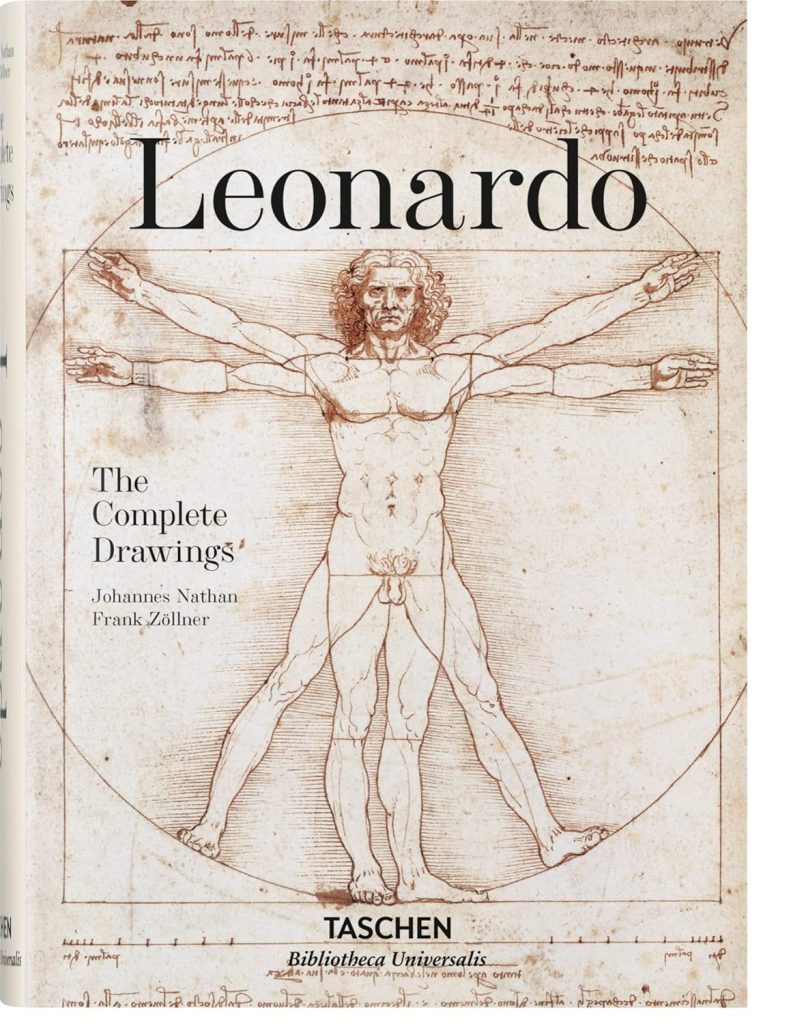
Famous Artists to Follow for Motivation
Drawing inspiration from renowned artists can provide insights, motivation, and new perspectives on your artistic journey. Here are a few notable artists to follow for inspiration:
Leonardo da Vinci: Explore da Vinci’s mastery of anatomy, scientific precision, and artistic innovation in fields ranging from painting to sculpture and beyond. His work is a testament to the power of observation and detail in drawing.
Vincent van Gogh: Discover van Gogh’s expressive use of color and bold brushwork, conveying raw emotion and personal vision in his iconic artworks. His style can inspire those looking to infuse more emotion into their drawings.
Georgia O’Keeffe: Embrace O’Keeffe’s unique perspective on nature and abstraction, with bold compositions and intricate details that redefine floral and landscape art. Her work is perfect for those interested in learning Easy Steps on How to Draw natural subjects with a unique twist.
Pablo Picasso: Study Picasso’s revolutionary approach to form, perspective, and cubism, challenging traditional norms and reshaping the art world. His work can inspire you to think outside the box and experiment with unconventional drawing techniques.
Frida Kahlo: Draw inspiration from Kahlo’s introspective self-portraits, rich symbolism, and exploration of identity, culture, and femininity. Her work demonstrates the power of personal narrative in art.
By seeking inspiration from diverse sources and studying the works of influential artists, you expand your artistic repertoire and nurture creativity. Use these insights to infuse your drawings with depth, meaning, and personal expression.

Step 14: Experimenting with Color
Introduction to Colored Pencils and Markers
Adding color to your drawings opens up a world of possibilities, allowing you to enhance mood, depth, and visual interest. Here’s a beginner’s guide to exploring colored pencils and markers:
Choosing the Right Tools: Select quality-colored pencils and markers that suit your artistic style and preferences. Consider factors like pigment intensity, blending capabilities, and durability of materials. In turn, you will be better equipped for learning Easy Steps on How to Draw vibrant illustrations.
Layering Techniques: Experiment with layering colors to create depth and dimension in your drawings. Start with lighter shades as a base and gradually build up darker tones for shading and highlighting.
Blending Methods: Explore various blending techniques such as blending stumps, tissue paper, or solvent-based blending solutions for smooth transitions between colors. This can help create more realistic and polished drawings.
Texture and Effects: Use different strokes and pressures to achieve varied textures and effects with colored pencils and markers. Experiment with cross-hatching, stippling, or blending for artistic expression.
Practice and Patience: Mastering color requires practice and patience. Allow yourself time to explore color combinations, techniques, and the unique characteristics of each medium.

Basic Color Theory for Beginners
Understanding color theory is essential for effectively using color in your drawings. Here’s a simplified guide to basic color theory:
Primary Colors: Red, blue, and yellow are fundamental colors that cannot be created by mixing other colors. They form the basis for all other colors on the color wheel.
Secondary Colors: Orange, green, and purple are created by mixing two primary colors together. They sit between the primary colors on the color wheel.
Color Harmonies: To enhance your understanding, explore color harmonies such as complementary (colors opposite each other on the color wheel), analogous (colors next to each other), and triadic (equally spaced colors on the wheel). These harmonies create balanced and pleasing color combinations.
Warm and Cool Colors: Learn to distinguish between warm (reds, oranges, yellows) and cool colors (blues, greens, purples) and how they can evoke different emotions and moods in your artwork.
Color Psychology: Consider the psychological effects of colors when choosing palettes for your drawings. Colors can convey emotions and messages, adding layers of meaning to your artistic expression.
By experimenting with colored pencils and markers and understanding basic color theory, you elevate your drawings with vibrant hues and expressive possibilities. Embrace the creative journey of exploring color and discover how it enriches your artistic vision.
Remember, the key to mastering color is practice and experimentation. Don’t be afraid to try new combinations and techniques. As you continue to develop your skills with color, you’ll find that it adds a new dimension to your artwork, allowing you to express emotions and ideas in ways that go beyond black-and-white drawings. For more Easy Steps on How to Draw, experiment with a color wheel and let your creativity flourish.

Step 15: Reviewing and Reflecting on Your Work
How to Critique Your Own Drawings
Critiquing your artwork is essential for growth and improvement as an artist. Here’s a guide on how to effectively assess and critique your own drawings:
Objective Observation: Step back and view your artwork objectively. Truthfully, the critique of your composition, proportion, and use of techniques will lead you toward improvement.
Technical Accuracy: Evaluate the technical aspects of your drawing, such as line quality, perspective, and shading. Consider how well you’ve executed your initial concept or idea.
Seek Feedback: Invite constructive feedback from trusted peers, mentors, or online communities. Embrace feedback as opportunities for learning and refinement.
Artistic Intent: Reflect on whether your drawing effectively communicates your intended message, mood, or story. Assess how well you’ve conveyed emotions or captured a moment.
Continuous Learning: Embrace a mindset of continuous improvement. Also, use critiques as motivation to further develop your skills and explore new artistic horizons. With continuity and criticism, Easy Steps on How to Draw can help streamline your learning process.
Setting Goals for Improvement
Setting clear goals is crucial for advancing your artistic skills and achieving your long-term aspirations. Here’s how to set effective goals for improving your drawing abilities:
Specific and Measurable Goals: Define specific goals such as mastering a new technique, improving anatomy skills, or completing a series of drawings within a timeframe.
Realistic and Achievable: Set goals that stretch your abilities without overwhelming you. Break larger goals into smaller, manageable tasks to maintain momentum.
Timeline and Deadlines: Establish timelines and deadlines to track progress and stay accountable to your goals. Schedule regular checkpoints to assess your development.
Adaptability: Remain flexible and adaptable in your goals as you grow as an artist. Adjust goals based on feedback, changing interests, or new opportunities that arise.
Celebrate Milestones: Celebrate achievements and milestones along the way. Recognize your progress, no matter how small, to stay motivated and inspired. Reflecting on your journey with Easy Steps on How to Draw can offer a structured path to improvement.
By critiquing your own drawings and setting meaningful goals for improvement, you empower yourself to evolve as an artist. Embrace the journey of self-reflection and goal-setting as catalysts for unlocking your full creative potential.
Next, we’ll explore advanced tips and techniques to refine your drawing skills and elevate your artistic craftsmanship. Ready to embark on the next phase of your artistic journey? Let’s continue this path of growth and discovery together!

Conclusion
Recap of Your Drawing Journey
As you conclude this comprehensive guide on learning to draw, take a moment to reflect on the milestones and discoveries you’ve made along the way. From mastering foundational techniques to exploring advanced skills, each step has contributed to your growth as an artist.
Foundational Skills: You’ve laid a solid foundation by mastering basic shapes, lines, and shading techniques. These skills form the backbone of your artistic expression.
Exploration of Mediums: By experimenting with different drawing mediums such as pencils, markers, and colored pencils, you’ve expanded your creative toolkit and discovered new ways to bring your ideas to life.
Color and Creativity: Delving into the realm of color theory has enriched your drawings with vibrant hues and deeper meaning. You’ve learned to wield color to evoke emotions and enhance storytelling in your artwork.
Reflection and Improvement: Through self-critique and goal-setting, you’ve honed your ability to assess and improve your own drawings. Each critique session has been a stepping stone toward refining your artistic vision.
Encouragement to Keep Practicing and Growing
As you continue your artistic journey, remember that growth comes from dedication, practice, and a willingness to embrace challenges. Here’s a final word of encouragement to fuel your passion for drawing:
Embrace Creativity: Let your imagination soar and explore new artistic territories. Don’t be afraid to push boundaries and experiment with unconventional ideas.
Persist Through Challenges: Artistic growth often involves overcoming obstacles and setbacks. Stay resilient and view challenges as opportunities to learn and evolve.
Celebrate Progress: Take pride in how far you’ve come as an artist. Celebrate small victories and milestones along your journey, and acknowledge the effort you’ve invested in refining your craft.
Community and Support: Surround yourself with fellow artists, mentors, and supportive communities. Share your work, seek feedback, and draw inspiration from the diverse perspectives of others.
Never Stop Learning: The journey of learning to draw is endless. Stay curious, continue exploring new techniques and styles, and nurture your passion for art with a lifelong commitment to learning. Incorporate Easy Steps on How to Draw to keep your practice focused and efficient.
By embracing these principles—reflection, dedication, and a love for creativity—you are poised to continue growing as an artist. Your journey doesn’t end here; it’s a continuous evolution of skills, ideas, and artistic expression. Keep practicing, keep exploring, and keep drawing your unique vision of the world. Your artistic journey awaits—let’s embark on it together and unlock the boundless possibilities of your creativity! Remember, with Easy Steps on How to Draw, you can achieve great things.
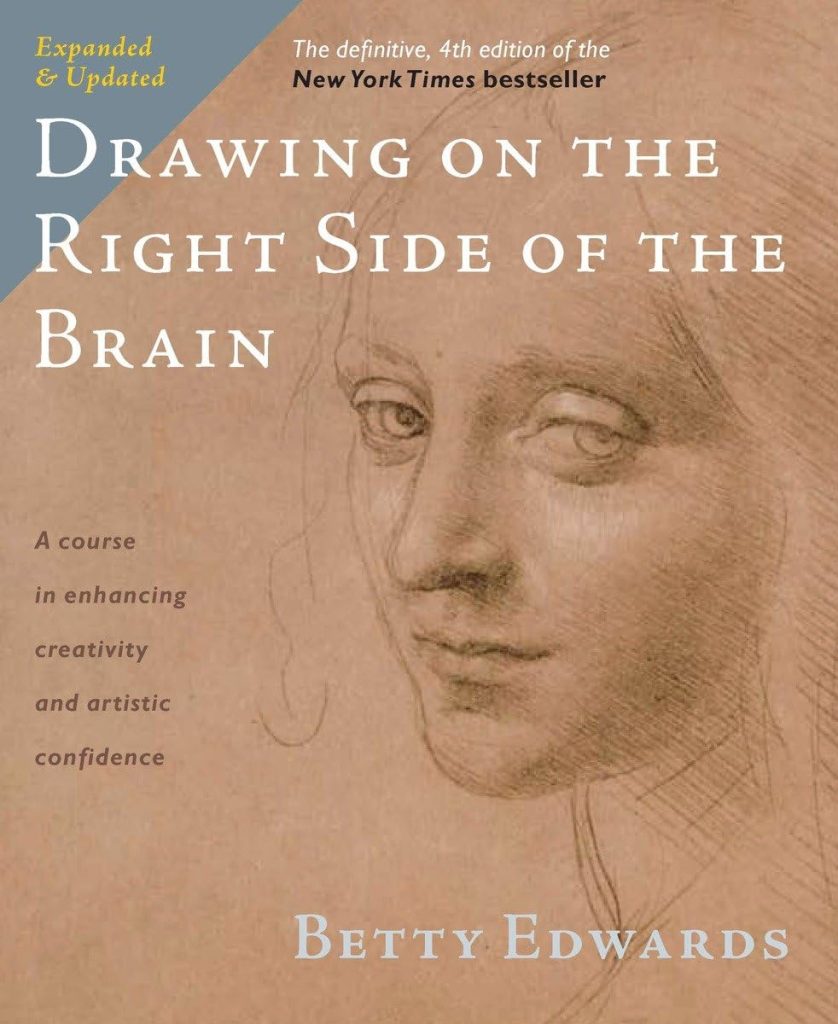
Additional Resources
Recommended Books For Easy Steps On How To Draw
Expand your knowledge and skills in drawing with these recommended books and tutorials:
1. “Drawing on the Right Side of the Brain” by Betty Edwards: Explore the fundamentals of drawing and unleash your creative potential with this classic guide.
2. “Keys to Drawing” by Bert Dodson: Discover practical exercises and techniques to improve your drawing skills, from basic shapes to advanced compositions.
3. Online Tutorials: Access a wealth of free and paid online tutorials on platforms like Udemy, Skillshare, and Coursera. Learn at your own pace from expert instructors around the world.
4. Local Workshops and Classes: Enroll in local workshops or art classes to receive hands-on guidance and feedback from experienced instructors in your community.
Links to Helpful Drawing Websites and YouTube Channels
Additionally, explore these resources to further enhance your drawing skills and creativity.:
1. DeviantArt: Join a vibrant online community of artists, share your work, and discover inspiration from diverse artworks across various genres.
2. Pinterest: Create mood boards, save reference images, and explore curated collections of artwork to spark your imagination and creativity.
3. ArtStation: Showcase your portfolio, connect with other artists, and explore professional artwork ranging from concept art to illustrations and digital paintings.
4. YouTube Channels: Follow YouTube channels such as Proko, Draw with Jazza, and How To Draw for insightful tutorials, drawing challenges, and artist interviews.
5. Online Forums: Engage in discussions, ask questions, and seek advice from fellow artists on forums such as WetCanvas and ConceptArt.org. By utilizing these resources, you can continue to refine your drawing skills, expand your artistic knowledge, and connect with a global community of passionate artists. Whether you prefer books, online tutorials, or interactive workshops, there’s a wealth of resources available to support your artistic journey. Embrace these tools, explore new techniques, and keep striving to achieve your artistic goals. Remember, Easy Steps on How to Draw can be found in many of these resources, making your learning journey enjoyable and effective. Happy drawing!
